Meteostat images
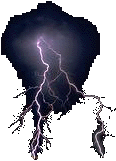
The
aurora page
|
Astronomy Picture
of the Day
Astronomy HyperText
Book
Imagine The Universe! Home
Page

Origin of the
Universe |
The Earth has a unique
solar system. It has an
oxygen rich atmosphere
and has liquid water.
These factors have
enabled the Earth to
evolve life, in all its
many forms. The Earth
is 149.6 million km,
93 million miles from
the sun. It takes the
earth 365.25 days to
rotate around the sun.
The oldest rocks
found in the earths
crust date to about
3,900 million years ago.
The Earths age is about
4,600 million years.
Its surface area is
510 million km squared.
(317 million sq miles The
oldest evidence of life is
3,500 million years ago.
The number of living species
is at least 10 million.
Phil Plait's Bad Astronomy: Home
Page |
Zoom Astronomy Glossary
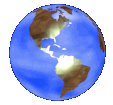
Eric Weisstein's
World of Astronomy |
British
Astronomical
association
home page
Welcome to the Astronomy Ireland
Homepage
|
National Radio Astronomy
Observatory
National Optical Astronomy
Observatory
SkyView Virtual
Observatory
Royal Observatory,
Edinburgh |
The
nine planets glossary
Extrasolar Planets
Encyclopaedia
Star-Fox.com Home Page - A Data Base
of the Solor System, All Nine Planets |
The Earths moon, is 0.012
the size of the Earth. It
has no air and its surface
is scarred by craters.
Its surface area is abou
t the size of North and South America.
The moons gravitational
pull is responsible
for our seas and oceans tides
The first successful lander on the moon was Luna 9 in
1966
|
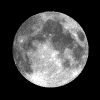 "That one small "That one small
step for man, one
giant leap for mankind" |
Space
The volume between objects in the
universe.
The
history of astronomy
Adler Planetarium & Astronomy
Museum |
Welcome to Astronomy for
Kids!
ZOOM ASTRONOMY
- Enchanted Learning Software

"The starry cape of heaven."
Milton |
The first man in space was
Yuri Gagarin (USSR)
on 12 April 1961.
His flight lasted
1 hour 48 minutes.
The first American in
space was John Glenn on
20 February 1962 his
flight lasted 4 hours 55 minutes.
The first space walk
was by Alexei Leonov (USSR)
3 July 1974. |
CLick here
to hear Neil Armstrong
That one small
step
|
The oldest person in space so far was Vance Brand
(USA) aged 59 on 2 December 1990.
The youngest person in space so far was Gherman Stepanovich
(USSR) aged 25 on 6 August 1961. |
The first moon landing
was by Apollo 8 (USA)
16 July 1969.
The first men on
the moon were
Neil Armstrong
and Buzz Aldrin. |
Wavs
Ignition
Atlantis
2
Committed
to launch
|
First Briton in space was Helen Sharman on 18 May
1991. |
The first woman in space was Anna Fisher (USA)
8 November 1984.
First Woman space walker was Svetlana Savitskaya (USSR)
17 July 1984. |
NASA Astronaut
Biographies
|

|
US Space Camp |
Women in Science and
space |
"Bright star, would I were steadfast as thou
art-
Not in lone splendour hung aloft the night."
Keats |
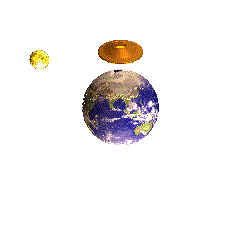 |
AbsoluteAstronomy.com
 |
Astronomy
Picture of the day |
Real
time
data
and
satellite images
Solar
system Live
Dramatic Comet Hale-Bopp
Photos
|
|
Wavs
321
The Eagle has
landed |
Discover
Magazine
Astronomy magazine on the
net |
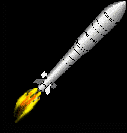 |
Mars-Roman
Mythology
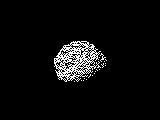
Mars
Atlas
Mars
Watch: Complete Viewer's Guide
MARS
Mars
Exploration
Mars
Global Surveyor MOC2-234 to MOC2-245 Releases
Space and Astronomy for Kids |
Mars is 0.107 the size of our Earth. It averages 227.9
km/141.6 million miles away from the sun.
It was named after the Roman God of war because of its
colour of blood.
It may be smaller than the earth, but it turns on its
axis much more slowly. A day on Mars is only 41
minutes longer than ours. However its orbital period is 687 Earth days.
Mars has two small moons Phobos and Deimos.
Phobos means "fear" and Deimos means "terror".
Phobos orbits Mars every 7 hours and 40 minutes.
Deimos however takes longer at 30 hours.
|
Mars soil contains
the following elements:
Silica 14%
iron 18%
aluminium 2.7%
titanium 0.9%
potassium 0.3%
Explore the planet Mars with
realistic Mars habitats, rockets, ground etc |
Escape velocity
To escape the pull
of the earths gravitational
pull a rocket needs
to achieve a speed
of 40,000km/h (24,840 mph). |
Jupiter's
Ring system |
|
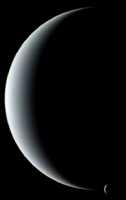 |
Planisphere
Planisphere.com
|
Jupiter is the largest of the planets. It is 318 times
the size of Earth.
It can be seen with the naked eye.
It has 16 moons, and is on average 778.3 million km from
the sun (483.7 million miles).
It has a rock core but mostly consists of gas in various
states. A giant wind system gives the planet a banded look.
Some of the winds move at up to speeds of several hundred
kilometers per hour.
It is also the fastest spinning planet.
|
Welcome to Fractal
World!
Sprott's Fractal
Gallery |
Venus is 0.81 times the
size of the Earth.
It averages 108.2 million km,
67.2 million miles
from the sun. Venus
shines brightly in the
sky and has often been
called the evening star.
Its atmosphere is made
up of sulphuric acid
and there is extreme
heat and pressure.
..not very nice! |
Jupiter has many moons. Their orbital periods vary from
0.295 days to 758 days!!
Europa: has sufficient internal heat to have liquid water
seas beneath its surface.
Io: Looks orange because of debris on the surface.
It has the first active volcanoes to be discovered outside of Earth.
Ganymede: the largest moon in the solar system.
It is larger than mercury and Pluto.
The Voyager probe took over 30,000 images of Jupiter
and its moons. |
 |
Pluto
The Planet
Pluto
Pluto-Images and
Information
PLUTO
- ENCHANTED LEARNING SOFTWARE |
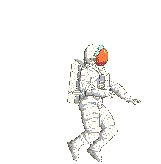
Space
walk game |
Saturn is famous for its rings.
Saturn has many moons,
more than any other planet.
at least 18. It is 95
times the size of Earth,
and averages 1,427 miles
away from the sun
(886.9 million miles)
Saturn's rings are made
of dust particles
and ice covered rock
particles. They are less
than 200m (656 ft) thick,
but over 270,000 km
(167,800 miles)
in diameter.
Saturn has three moons
that share the same
orbit- Tethys, Telesto
and Calypso. |
Deep
Space network |
neptune's
ring system |
Neptune is named after the Roman God of the
Sea.
Neptune is 17 times larger than the Earth. and has 8
moons. The moons and its rings were discovered by the Voyager 2 probe. |
Mercury is only 0.055 the size of the Earth. It is on
average 57.9 million km, 36 million miles away from the sun.
It is named after the messenger of the Roman Gods because
it travels quickly across the night sky.
A day on Mercury lasts 176 earth days. However
a year on Mercury only lasts 88 Earth days as that is the time
it takes to orbit the sun. |
Uranus is 14.5 times the size of Earth. It
is 2,871 million km , 1,184 miles, from the sun. It is called after
Urania, the ancient Greek muse of astronomy.
Its moons are named after characters from Shakespeare
plays.
It has about 15 moons and more may yet be
discovered. |
|
SpaceWander
Roundtrip First Class
SpaceWander
Links |
 |
The
ultimate Field Trip
"Slowly, silently, now the moon,
Walks the night in her silver shoon."
Walter de la Mare 1873-1956 |
|
Pluto is 0.002 the size of the Earth. It is 5,913.5
million km, 3,675 million miles from the sun.
Pluto has one large moon called Charon. |
Introduction to
Cosmology |
The oldest existing observatory was built in Southern
Korea in 632 AD. |
 Galaxy Photography Galaxy Photography |
 |
|
Project
Galileo |
|
Meteor
A streak of light in the sky caused by a rock or
dust particle burning up in the Earth's atmosphere.
|
The solar and heliospheric
observatory |
Solar
Eclipses for Beginners
Howstuffworks
"How Solar Eclipses Work"
|
Asteroids are chunks of rock that orbit the sun. The
first ever discovered was Ceres which has a diameter of 933 km, 580
miles.
It is only a matter of time before the earth is again
struck by an asteroid. |
Meteorites
The largest meteor to hit the Earth weighed about 60
tonnes, it fell at Hoba West in Southern Africa.
Most meteorites that land on Earth are "stones"
Tsar Alexander of Russia had a sword made from an iron
meteorite last century. |
The Hubble Space Telescope uses a large mirror to
collect light. It is then directed into one of the scientific packages
by use of another mirror. Because it is in space and above Earths
atmosphere it can see much further and clearer than telescopes on Earth
Gems of the
hubble Space telescope |
SOLAR
ECLIPSE
Espenak's
Eclipse Home Page
SOLAR ECLIPSE: Stories
From the Path of Totality |
 |
Comets,
meteors and asteroids |
Comets
Comet
Introduction
Comet Halley
Comet Hale-Bopp Home Page
(JPL) |
Black Hole
An infinitely dense object caused initally by the collapse
of a star. Its gravity is so strong that even light cannot escape. |
Black
Hole
of the
web
|
Stars
media clip |
Red Giant
A stage in the life cycle of many stars when they get
larger and start converting helium to carbon
White Dwarf
The collapsed core of a sun-sized star. |
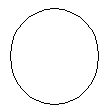
COMET
CARTOONS |
"The spacious firmament on high,
All the blue ethereal sky,
And spangled heaven, a shining frame,
Their great original proclaim!"
Joseph Addison 1672-1719 |
The Space Quiz
Game |
Grand
Illusions
|
eyetricks.com - Amazing Optical
Illusions, 3D Stereograms
|
|
Hexxagon -
MiniClip.com
Astronomy
Puzzles |
" Ye stars! Which are the poetry of
heaven!"
Byron |
 |
Space
shuttle game |
HobbySpace - Space
Games
CSA
- Space Games
ALFY - Arcade - Space
Games |
Brain Teasers and Puzzles:
BrainBashers
Livewire Puzzles
KD Puzzles
Links
|
NRICH Mathematics
Enrichment Club
Interactive Mathematics
Miscellany and Puzzles |
 |
 |
 |
 |
|
|
|
VIP Movie
mail
Goddess Email @
GoddessDreams.com
|
Gallery of
Celebrities
Celebrities @ Hollywood.com
- Celebs, news, gossip, videos, interviews, |

Celerbity Downloads,
desk themes etc |
Greatest Film Star
Roles (and Legends) I
|
World-Of-Celebrities
- Your online source for celebrities, actors, actresses, models
etc |
RAWHIDE |